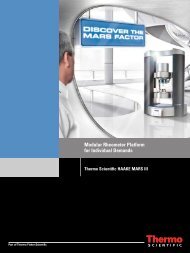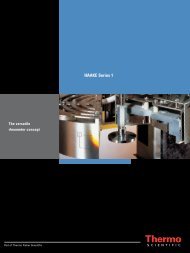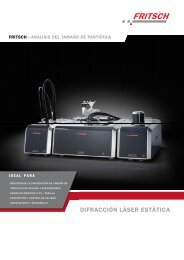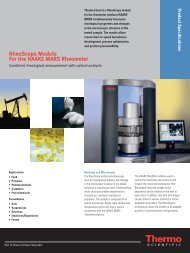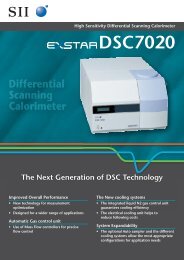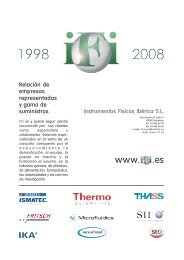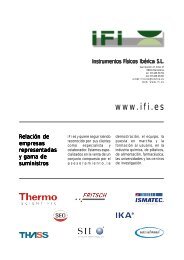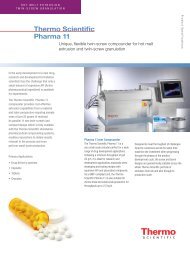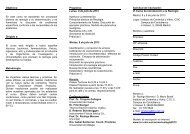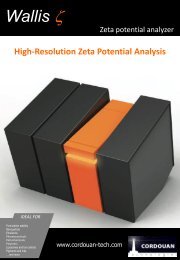When user-friendliness and reliability matter
When user-friendliness and reliability matter
When user-friendliness and reliability matter
You also want an ePaper? Increase the reach of your titles
YUMPU automatically turns print PDFs into web optimized ePapers that Google loves.
2<br />
VISCOMETRY<br />
Basic principles in rheology<br />
Selecting a viscometer<br />
Viscometry<br />
Flow behavior<br />
Viscometers determine the flow behavior<br />
of fluids. Viscosity describes a material<br />
property which is dependent on different<br />
parameters such as mechanical stress <strong>and</strong><br />
strain, time as well as temperature <strong>and</strong><br />
other ambient conditions.<br />
In rheology we differentiate between<br />
so-called Newtonian <strong>and</strong> non-Newtonian<br />
materials. Newtonian materials are<br />
characterized by a viscosity which may<br />
depend on temperature but is independent<br />
of the shear rate (<strong>and</strong> shear stress). Yet<br />
the viscosity of non-Newtonian materials<br />
depends on the shear rate. For most<br />
non-Newtonian materials the viscosity<br />
decreases with increasing shear rate.<br />
This behavior is called shear-thinning,<br />
or pseudoplastic. A material in which<br />
viscosity increases at increasing shear<br />
rates is called shear-thickening or dilatant.<br />
Viscosity η [mPa·s]<br />
Temperature T [°C]<br />
Materials that do not flow until the applied<br />
shear stress surpasses a certain value are<br />
said to have a yield-stress.<br />
Shear Stress τ [Pa]<br />
Rotational viscometers<br />
Using a rotational viscometer, the viscosity<br />
is calculated from the measured torque <strong>and</strong><br />
rotational speed as well as the dimensions<br />
of the measuring geometry. If the<br />
measuring geometry fulfils certain<br />
requirements (e.g. small gap), which is<br />
the case for coaxial cylinder, plate/plate<br />
<strong>and</strong> cone/plate measuring geometries<br />
(DIN 53018, DIN 53019...), the absolute<br />
value of the viscosity can be calculated.<br />
If the dimensions of the measuring<br />
geometry are not well defined, only a<br />
relative value for the viscosity can be<br />
determined. In this case, the measured<br />
viscosity value not only depends on the<br />
ambient conditions, but also on the test<br />
method, i.e. the measuring geometry.<br />
Falling ball viscometers<br />
The falling ball viscometer is a conventional<br />
<strong>and</strong> highly accurate instrument for the<br />
determination of the absolute value of<br />
the viscosity of a Newtonian material.<br />
The viscosity can be calculated from the<br />
falling time of the ball, the density of the<br />
ball as well as the diameter of the tube<br />
<strong>and</strong> the ball.<br />
.<br />
Shear Rate γ [1/s]<br />
Viscosity η [mPa·s]<br />
.<br />
Shear Rate γ [1/s]<br />
Newton<br />
Dilatant<br />
Pseudoplastic<br />
Plastic<br />
Bingham



